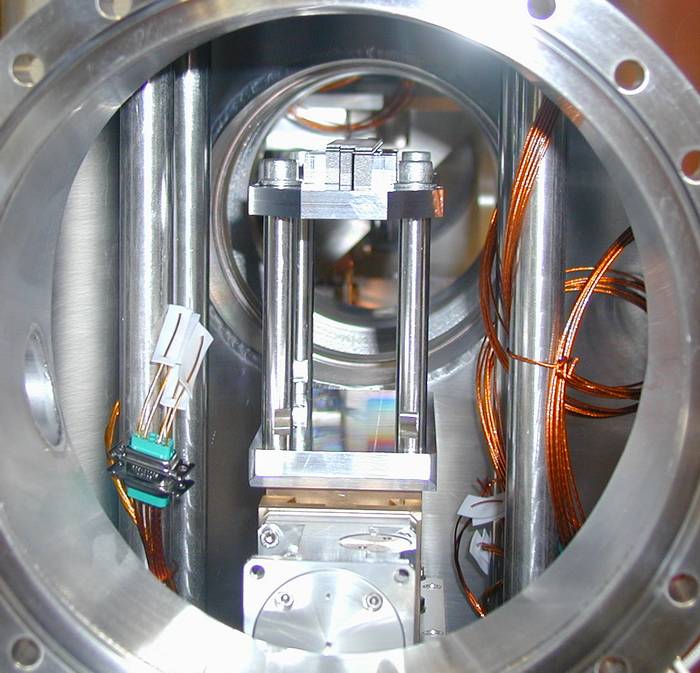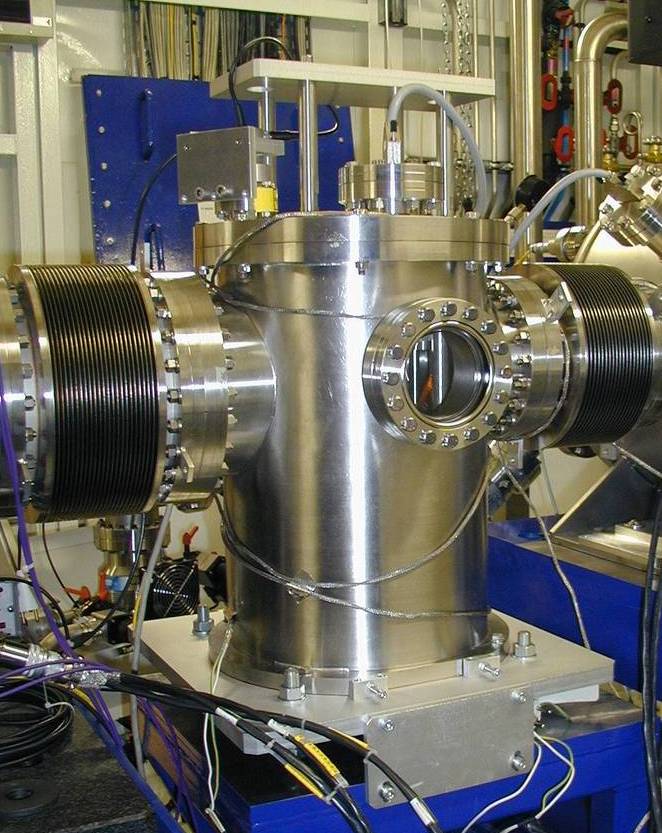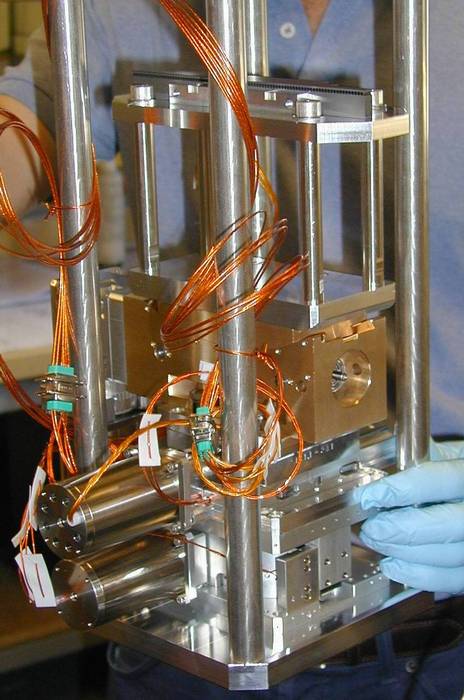- Home
- Users & Science
- Find a beamline
- Electronic structure, magnetism and dynamics
- ID28 - Inelastic Scattering II
- Beamline Layout
- Optical Hutch 2
- Focusing compound refractive Beryllium lenses
Focusing compound refractive Beryllium lenses
A set of four compound refractive x-ray lenses (CRL), made out of Beryllium, is installed in OH2 at an optical distance of 94 m from the source point. Their role is to provide a better vertical focus as the one obtained by the toroidal mirror. This is achieved thanks to the larger demagnification M (M = q/p = 0.085) with respect to the standard optical setup, using the toroidal mirror (M = 0.33). The use of the focusing CRL is optional and intended for experiments which need a very small spot size on the sample. In order to ensure the highest throughput, the focusing CRL has to be used in conjunction with the collimating CRL. If one assumes a perfect vertical collimation of the X-ray beam (sz’ = 0), the equation for the focusing lens becomes:
R/N=2  q
q
where R is the radius of the hole, N the number of holes, d is the refractive index decrement, and q the distance between the lens and the focal plane.
Table X summarises the characteristics of the focusing CRL’s.
|
Si(n,n,n)
Reflection |
N holes
R = 1 mm |
|---|---|
| 8 | 46 |
| 9 | 58 |
| 11 | 86 |
| 13 | - |
The web thickness in the center axis of the lens is 0.1 mm. The focusing lens system is currently being commissioned.
|
Picture 1 : View of the CRL Be lenses vacuum chamber. |
Picture 2 : Be lenses installed on the goniometer head. |
|
 Picture 3 : View of the CRL Be lenses inside the vacuum chamber. |





